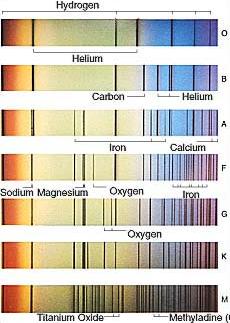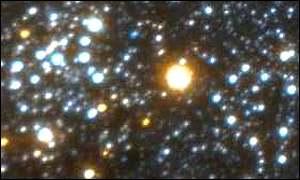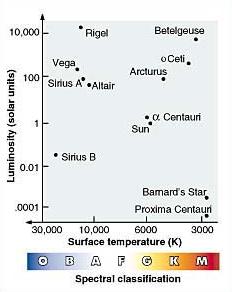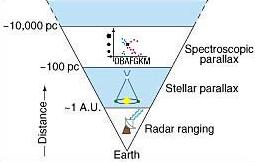 |
Spectrum and
Temperature
- What distinguishes one star from another?
Mainly color and brightness (temperature and luminosity, size
is related to those quantities), and to some extent chemical
composition; For example, Betelgeuse is red, Rigel bluish (Zubeneschamali
greenish).
- Temperature from spectrum: Look
at the wavelength of the brightest part (or absorption lines);
example of the Sun.
- Temperature from color index:
Compare the intensity of B and V light, and find the ratio (B
intensity / V intensity), which is related to T (not affected
by velocity).
- Temperature range: T
usually ranges from 3,000 K to 50,000 K [but colder stars are
being found, and classified as L and T; others seem to be as
hot as 75,000 K!].
- Spectral type/class: Based on
the intensity of some spectral lines, classes are O-B-A-F-G-K-M
(each from 0 to 9), in order of decreasing temperature.
- Examples: the Sun 6000 K, G2;
[Betelgeuse 3000 K, M2; Arcturus 5000 K, K2; Procyon 7000 K,
F5; Sirius 10000 K, A1; Rigel B8; others 30,000 K.]
- New spectral classes: Brown dwarfs are
in colder classes, L from 1,300 to 2,000 K, T from 750 to 1,300
K, and Y when even colder.
|





![]()